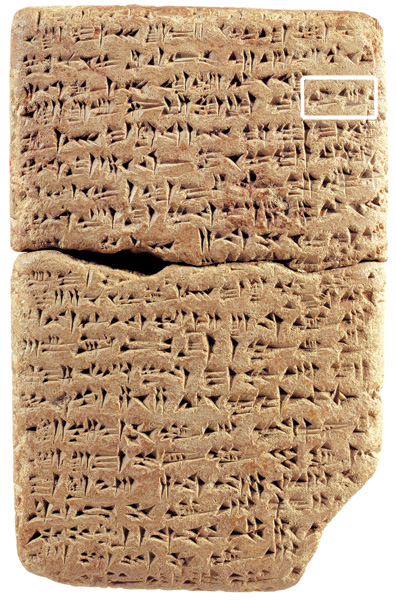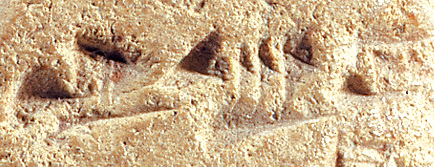Jerusalem in David and Solomon’s Time
It Really Was a Major City in the Tenth Century B.C.E.
020

Among the most controversial issues in both Biblical archaeology and Biblical studies is the nature of Jerusalem in the tenth century B.C.E. Why the tenth century? Because in the Bible that is the time of Israel’s glory, the time of King David and King Solomon, the time of the United Kingdom of Judah and Israel.
The archaeological period just before that (what scholars call Iron Age I) is also important because—again according to the Bible—that is the Jerusalem that King David conquered after ruling in Hebron for seven years. What Jerusalem was like in Iron Age I is just as controversial as what it was like in the tenth century (the earliest phase of Iron Age II).
Jerusalem may be the most excavated city in the world. The article on Jerusalem in the Israel Exploration Society’s New Encyclopedia of Archaeological Excavations in the Holy Land (NEAEHL) lists 126 major excavations between 1853 and 1992. Since then, several other major excavations have revealed a wealth of new material.
But very little has been uncovered from Iron Age I (12th-11th centuries B.C.E.) or the earliest phase of Iron Age II (tenth century B.C.E.).
What has in fact been found? And what are the justifiable implications from what has not been found?
Our discussion will be confined to archaeology. We will talk a lot about the affirmative evidence, as well as what we can conclude from the absence of evidence. Both topics are hotly debated. For example, a leading Israeli archaeologist, David Ussishkin, maintains that after more than 150 years of intense archaeological excavation, Jerusalem has failed to produce any evidence of an occupational stratum, a fortification wall or even pottery from the period of the United Monarchy. Said Ussishkin: “I am afraid that evidence regarding the magnificent Solomonic capital was not discovered because it is nonexistent, not because it is still hidden in the ground.”1
My own view is that the archaeological evidence demonstrates that during the time of Israel’s United Monarchy, Jerusalem was fortified, was served by two complex water-supply systems and was populated by a socially stratified society that constructed at least two new residential quarters—one located inside and the other located outside the city’s fortification wall.
Equally important are the reasons for the supposed lack of affirmative evidence. Why is there so little?
One thing on which all scholars agree: In the time of David Jerusalem was confined to what is still called the City of David; that is, to a spur stretching south of the Temple Mount and bounded on the east by the Kidron Valley and, on the west and south, 023by the valley known in Roman times as the Tyropoeon, or Cheesemakers’s Valley.
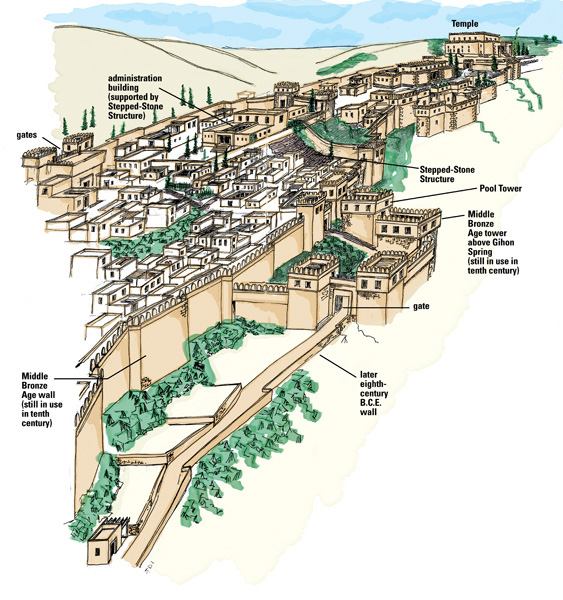

Jerusalem’s prominence during the Iron Age was probably due, at least in part, to its position guarding the northern end of a bottleneck on the north-south route that followed the watershed line through the center of the country.
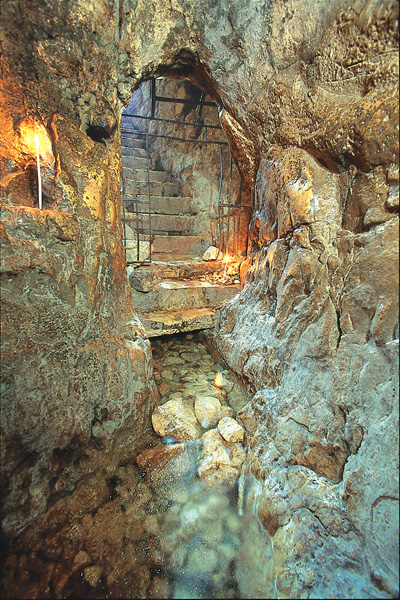
On the eastern slope of the City of David, near the floor of the Kidron Valley, is Jerusalem’s only perennial source of water, the Gihon Spring. Although the spring debouches into a cave located about 30 feet below the modern ground surface, in antiquity that cave opened onto the eastern slope of the hill well above the valley floor. The most imposing surviving monument in the City of David is a complicated edifice known as the Stepped-Stone Structure, on the northeast slope of the site. The Stepped-Stone Structure is so massive that it could only have been supported by the fortification wall located near the middle of the City of David’s eastern slope. (More about this fortification wall later.) It consists of a substructure and a superstructure. The substructure is composed of a series of interlocking terraces bounded by north-south spine walls and closely spaced east-west rib walls. Together, the “spine” and “rib” walls created a series of stepped, terrace-like compartments. These compartments were filled first with a layer of loosely packed boulders and then, above the boulders, with compacted soil. On top of the stone- and soil-filled compartments was the superstructure. The superstructure, reaching the equivalent of a 12-story building (10 feet per story), consisted of a rubble core and a mantle of roughly dressed limestone boulders laid in stepped courses rising from east to west.
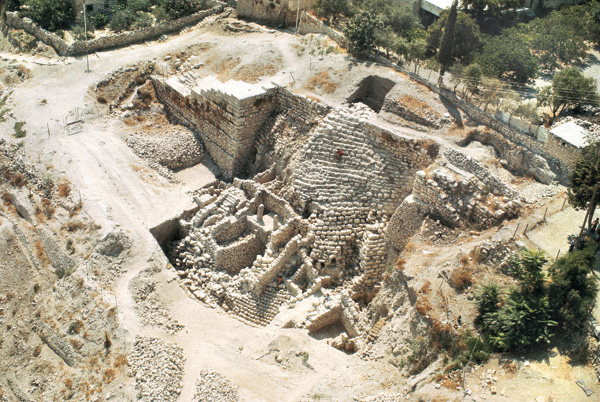
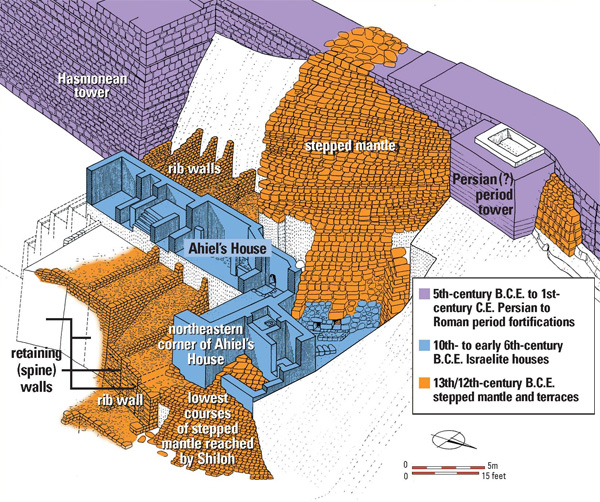
Parts of the Stepped-Stone Structure have been excavated by three expeditions directed by prominent archaeologists: the Irish-American team of R.A.S. Macalister and J. Garrow Duncan (1923–1925); British archaeologist Dame Kathleen Kenyon (1961–1967); and Israeli archaeologist Yigal Shiloh (1978–1985). It is generally agreed that the Stepped-Stone Structure supported a major complex at the top of the hill—a fortress, administrative complex, palace or public structure of comparable importance.
The dating of this complex structure is nothing if not contentious. Both Kenyon and Shiloh regarded the substructural terraces and the superstructural mantle as separate free-standing architectural units. They dated the substructural terraces to the 14th-13th century B.C.E. (the Late Bronze Age). Kenyon dated the uppermost courses of the superstructural mantle discovered by Macalister and Duncan to the second century B.C.E. (Hellenistic period); one part of the stepped mantle courses that she discovered to the tenth century B.C.E., the time of the United Monarchy; and another part that she discovered to the end of the eighth century B.C.E., the time of the Judahite king Hezekiah. Shiloh discovered that all the various parts of the stepped mantle belonged to a single structure that he dated to the tenth century B.C.E.
Both Kenyon and Shiloh died without completing their final reports. Kenyon’s archaeological heir responsible for publishing the final report on this part of her excavation is Dutch archaeologist Margreet Steiner. I serve that same function with respect to Shiloh’s excavation.
Steiner, like Kenyon and Shiloh before her, has concluded that the substructural terraces and the superstructural mantle are separate, independent architectural elements. However, Steiner dates the substructural terraces somewhat later than Kenyon and Shiloh—to the 12th century B.C.E. (the beginning of Iron Age I). She dates the stepped 025superstructural mantle to the tenth century (the United Monarchy, i.e., beginning of Iron Age IIA).a
My own view is different. From my experience supervising the excavation of the Stepped-Stone Structure under Shiloh’s direction and from a careful and detailed examination of Shiloh’s excavation records—and as much of Kenyon’s material as has been published—I am firmly convinced that the substructural terraces and the stepped mantle were built at the same time.
The evidence for this comes from a vertical section and a rectangular probe that Shiloh dug into the Stepped-Stone Structure. Both the section and the probe yielded architectural evidence demonstrating that the stepped mantle of the superstructure and the substructural terraces were built together as a single architectural unit. The rectangular probe (about 8 by 13 feet), revealed that the stepped mantle capped and sealed the superstructure’s rubble core, which, in turn, capped and sealed the substructural terraces below. Moreover, in this rectangular probe, the rubble core immediately below the mantle was bonded—that is structurally integrated—with a stone fill retained by one of the spine walls that enclosed one of the substructural terraces. The vertical section revealed the same stratigraphic sequence of architectural elements, from the top down: stepped mantle, rubble core, soil- and stone-filled compartments.
There is also ceramic evidence that the Stepped-Stone Structure’s substructural terraces and superstructural mantle are one architectural unit, built at the same time. Shiloh’s excavation produced approximately 500 potsherds from the Stepped-Stone Structure, including roughly 100 potsherds from the substructural stone fills, 350 potsherds from the substructural soil fills and 50 potsherds from the rubble core. The composition and character of these ceramic assemblages are identical. The latest of these potsherds date to the transition between the Late Bronze Age II and the Iron Age I, about the 13th-12th century B.C.E.
While the evidence is complicated, technical and controversial—and it has only been briefly described here—I am confident that the analysis I have presented in more detail elsewhere is correct.2 The mantle of the Stepped-Stone Structure, its rubble core and the interlocking substructural terraces must have been contemporary and must be identified as component parts of a single structure during the transition from the Late Bronze to the Iron Age (13th-12th century B.C.E.). That such extraordinary architectural phenomena would be preserved within similar boundaries, contain identical pottery and yet represent the remains of two distinct structures separated in time by three to four centuries, as advocated by Kenyon and Shiloh (and to a lesser extent, by Steiner as well), seems very unlikely.
The size and complexity of this monumental structure indicates that it was an integral part of the city’s fortification system. It probably skirted and supported a fortress or citadel that housed the pre-Davidic city’s administrative-religious complex at the highest point of the town.
Because the pottery recovered from inside the Stepped-Stone Structure’s internal fills indicates that it was built during the transition from the Late Bronze to the Iron Age it is difficult to understand Tel Aviv University archaeologist Israel Finkelstein’s contention that, although there are indications of habitation in Jerusalem in Iron Age I, there are “almost no signs of monumental building operations.”3 Although almost 200 years appear to have passed before Jerusalem was captured by the Israelites under David, the construction of the monumental Stepped-Stone Structure at the dawn of the Iron Age set the stage for Jerusalem’s future development as capital of the United Monarchy.
Setting aside other evidence for pre-Davidic Jerusalem, the question to ask is: What are the implications of such a huge complex fortress housing the city’s administrative-religious institutions? What architects and laborers and stratified social and economic society were required to construct such a daunting architectural masterpiece? Does it make sense to say that in the period that immediately preceded David’s conquest Jerusalem was hardly there?
If I may be allowed to mention the Bible, the Stepped-Stone Structure seems to me an excellent candidate for the Fortress of Zion (Mestudat Tsion) that we are told defended the city before David captured it (2 Samuel 5:7). 026Its imposing presence on the eastern slope may well have inspired Jerusalem’s residents to taunt David and his men that they would not enter the city without first removing the blind and the lame because the city was so well fortified that only someone capable of curing the blind and the lame could breach its defenses.
In recent years some scholars have challenged both the existence of the kings of the United Monarchy as historical figures and the ascription of any archaeological remains in Jerusalem to the period of their rule. Doubts as to the existence of David and his progeny as historic figures, however, have now been dispelled by discovery of the Tel Dan inscription mentioning the “House [Dynasty] of David” (Beth David), a bare 150 years or so after the monarch’s death.b
As for the archaeological remains of the United Monarchy, fragmentary and largely unpublished stratigraphic evidence demonstrates the uninterrupted occupation of Jerusalem from the Iron Age I to the early Iron Age II (c. 12th/11th-10th/9th century B.C.E.). This evidence came to light in almost every area excavated by Shiloh on the City of David’s eastern slope.
These periods of Jerusalem’s history are associated with three stratigraphic phases (Strata 15, 14 and 13) attributed to the 12th/11th, 10th, and 9th centuries B.C.E. The remains of these three phases show a secure period during which the city prospered and outgrew its previous boundaries.
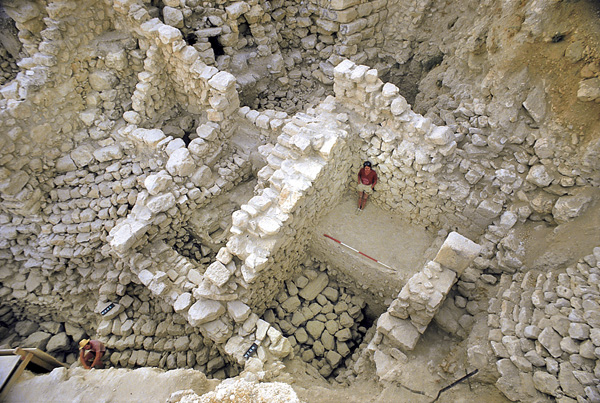
The Iron Age I period (12th/11th century B.C.E.—Stratum 15) is represented by the already described Stepped-Stone Structure. Beginning in early Iron Age II (tenth century B.C.E.—Stratum 14) part of the Stepped-Stone Structure was removed and houses were built on and into it to accommodate an expanding city. Shiloh extensively excavated two of these houses—Ahiel’s House (so-named because of an inscription found in the house) and the Burnt Room House (so named because the only one of its rooms completely cleared was severely burned during the Babylonian destruction of 586 B.C.E.). Each of these houses exhibited more than one phase of occupation, shown by multiple floors laid one atop another. The earliest in both cases was the floor of Stratum 14—from the time of the United Monarchy. The pottery assemblage from the Stratum 14 floor cleared in the Burnt Room House includes an imported Cypro-Phoenician bichrome flask that clearly dates to the earliest phase of Iron Age II. In addition, there was a substantial amount of local pottery traditionally dated to the tenth century B.C.E. (Although Israel Finkelstein, arguing for a minimalist position, might date this pottery to the ninth century B.C.E., the assemblage is closely comparable to the pottery assemblage from Stratum 12 at Arad, which all scholars—including Israel Finkelstein—agree dates to the tenth century B.C.E.)
Built on and into the Stepped-Stone Structure, which was so massive that it could only have been supported by the city’s fortification wall, the House of Ahiel and the Burnt Room House belonged to a residential quarter newly constructed inside the walled area of the city. They were built of partly dressed limestone boulders some of which were 2.5 feet long. The eastern wall of each house was more than 3 feet thick. Contemporaneously, a second residential quarter was constructed outside the fortification wall. However, walls in the houses built in the extramural quarter were thin (only 1.5 feet thick) and made of small undressed 027fieldstones.4 The pottery from these houses consisted mainly of kitchenware and did not include any imported vessels. The differences noted between the houses built inside the fortification wall and those constructed outside the fortification wall suggest that structures in the extramural quarter served as dwellings for Jerusalem’s less-affluent residents.5 These differences suggest, in turn, a stratified society of the early Iron Age II (the time of the United Monarchy) not previously evident in Jerusalem’s archaeological record. The construction of both these residential quarters in the earliest phase of Iron Age II demonstrate that during the tenth century B.C.E. the city spread beyond the boundaries established by its preexisting fortification walls.
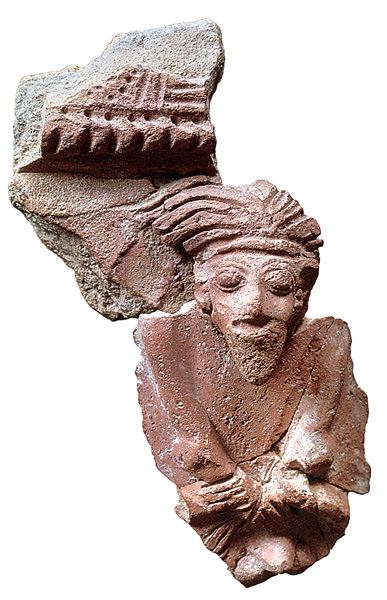
Moreover, the disfigurement of the Stepped-Stone Structure to accommodate houses like Ahiel’s House and the Burnt Room House and the development of a new residential quarter outside the city’s fortification wall suggest developmental pressures caused by a growing population and a shift in the city’s security requirements, pressures that appear to have been stimulated by an increasingly stable environment during the United Monarchy.
Construction of the House of Ahiel and the Burnt Room House on top of the Stepped-Stone Structure appears to have been possible due to the expansion or relocation of the city’s new administrative-religious center to what we know today as the Temple Mount, north of the City of David. The focal point of the city would then have been the new Temple, adjoined by a precinct of royal and administrative buildings, none of which have been discovered, at least arguably because the Temple Mount is strictly off limits to archaeologists.
The most frequently voiced argument by those who challenge the historical existence of the United Monarchy is a supposed lack of archaeological evidence. In most cases these arguments are either grossly misleading, illogical, disingenuous or all three. Virtually every archaeologist to have excavated in the City of David has found architecture and artifacts dating to the period of the United Monarchy.
But the argument of the nay-sayers is not confined to the period of the United Monarchy (early Iron Age II) or even to the period immediately before that (Iron Age I). They contrast the so-called meager remains from these periods with the relatively extensive remains from later in the Iron Age II period (eighth-sixth century B.C.E.). The reason for this admitted disparity requires an understanding of ancient site formation in the central hill country of Israel. As in other sites in this area, buildings in Jerusalem have traditionally been constructed of stone rather than brick. Jerusalem’s builders have therefore excavated to bedrock to secure both firm foundations and building stones. As observed by Shiloh, these building practices have prevented the accumulation of superimposed archaeological strata characteristic of Israel’s tells:
The continuity of accumulation of the strata in the various excavational [sic] areas was not uniform. The builders in each stratum sought to found their structures directly on bedrock, and thus often they damaged earlier strata, which occasionally were 028even destroyed altogether. For this reason, Strata 12–10 [eighth-sixth centuries B.C.E.] were especially [well] preserved, for they are the last major construction strata on the eastern slope.6
Moreover, on the summit of the ridge we call the City of David, Roman and Byzantine quarrying has caused irreparable damage to the archaeological record. In the words of Kathleen Kenyon:
Evidence of early occupation on the summit area of the [City of David] does not exist. This lacuna is mainly because Roman quarrying and Byzantine buildings have destroyed all earlier structures and earlier occupation. For all we know, the original height of the eastern ridge [i.e., City of David] may have been appreciably above that of the surviving rock.7
Thus, the best-preserved structures in Jerusalem are those most recently constructed, with earlier remains preserved only when exploited or avoided by later builders.
The extensive remains from later in Iron Age II (which ended with the Babylonian destruction of Jerusalem in 586 B.C.E.) on the eastern slope of the City of David were preserved only because they are the remains of the last buildings constructed in the area before modern times.8 When the exiles returned from the Babylonian Exile, they built their city wall higher up the slope, near the top of the ridge.
The nay-sayers have an answer to this, however: How come, they ask, we have such monumental remains from the Middle Bronze Age (18th-17th centuries B.C.E.)?
The Middle Bronze Age remains in the City of David have emerged most dramatically in the recent excavations of Ronny Reich and Eli Shukron.c Even before that, however, we knew of a massive fortification wall built above a steep scarp in the middle of the eastern slope of the City of David. Both Kenyon and Shiloh exposed parts of it. It is built of enormous stones and is over six feet wide.
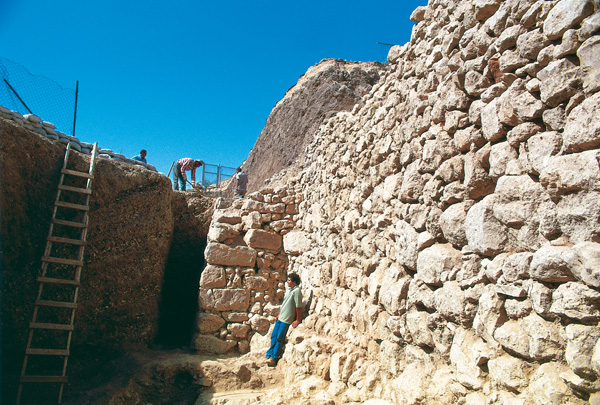
During salvage excavations recently conducted in the vicinity of the Gihon Spring, Reich and Shukron uncovered remains of two possibly free-standing towers also built during the Middle Bronze Age from cyclopean stones, some of which are more than 6 feet long. According to Reich and Shukron, these towers guarded both the entrance to the Gihon Spring and a pool from which its water could be drawn.
In the course of their excavation, Reich and Shukron were able to redate to the Middle Bronze Age two other long-known features of the City of David—what scholars call Channel II, as numbered in the early 20th century by Father Louis-Hugues Vincent who studied the city’s complicated water system, and parts of the Warren’s Shaft water system.
Channel II is a long channel, sometimes open, sometimes covered, extending down the entire eastern side of the City of David, carrying the water of the Gihon Spring to a pool at the southern end of the city and on the way irrigating terraced fields located on the slopes of the adjacent Kidron Valley. In excavating the towers adjacent the Gihon Spring, Reich and Shukron discovered that beneath the huge stones of one tower lay the beginning of Channel II; that is, the construction of Channel II preceded the construction of the towers guarding the Gihon Spring. In other words, Channel II, with its fine stone construction, dates at least to the Middle Bronze Age.
The Warren’s Shaft water system consists of a long tunnel that leads from inside the city to a chimney-like shaft, which for more than a hundred years was thought to have been used to draw water directed to 029its base by a channel leading from the Gihon Spring. Reich and Shukron have shown, however, that the long tunnel leading to the shaft was dug in two phases, and that only in the second was the natural karstic sinkhole known as Warren’s Shaft accidentally discovered. In the first phase, which Reich and Shukron have shown dates to the Middle Bronze Age, the tunnel extended beyond the location of Warren’s Shaft to a pool that collected the waters of the spring.d
The argument is that these finds demonstrate that 031architecture far older than the United Monarchy (and the immediately preceding Iron Age I period) has copiously survived, only emphasizing the lack of these kinds of remains in the later periods of the United Monarchy (and the immediately preceding Iron Age I period). In other words, if more hasn’t been found from these later periods, it is because it was never there—so the argument runs.
These Middle Bronze Age features were preserved, however, only because they continued to be used right down to the end of the eighth century B.C.E. and possibly even until the Babylonian destruction of 586 B.C.E.
This assertion takes some explanation: It is agreed by everyone that in the eighth century B.C.E. a new fortification wall—in places possibly even a double fortification wall—was built to protect the city. It is also universally agreed that Hezekiah’s Tunnel, which carried the water of the Gihon Spring to the western side of the city, was quarried at this time as a defensive measure, hiding the spring and its water from the Assyrian army that besieged Jerusalem during King Hezekiah’s reign (Isaiah 22:11, 2 Chronicles 32:2–4).
Since it is also agreed that there was some habitation of the city between the Middle Bronze Age and the eighth century B.C.E., it is reasonable to conclude that the Middle Bronze Age water systems remained in use at least until Hezekiah’s Tunnel was quarried.
Moreover, the massive Middle Bronze Age wall (built about 1800 B.C.E.) was also used until about the eighth century B.C.E., roughly a thousand years. The evidence comes from Kenyon’s excavation, from Shiloh’s excavation and from the recent excavations of Reich and Shukron. All three of these excavations found features from the eighth century B.C.E. (Iron Age II) integrated into features from the Middle Bronze Age.
Kenyon found Iron Age II extramural structures built right up to the outer face of the Middle Bronze Age fortification wall, indicating that that wall must have been there in Iron Age II. Shiloh found that large sections of the Middle Bronze Age fortification wall were incorporated into the fortification wall built during Iron Age II.
Thus Kenyon and Shiloh independently concluded that the Middle Bronze Age fortification wall remained in use during Iron Age II.
And Reich and Shukron found at least one floor surface from the end of the Iron Age built up to the exterior wall of one of the Middle Bronze Age towers guarding the Gihon Spring. This is indisputable evidence that at least one of these towers remained standing until the end of Iron Age II, in the sixth century B.C.E.
In short, the Middle Bronze Age fortification wall and the Middle Bronze Age towers around the Gihon Spring remained standing and in use throughout the period of the United Monarchy until they were either superseded by later construction during Iron Age II or destroyed at the end of that period by the Babylonian army in 586 B.C.E.
062
It should hardly surprise us that these Middle Bronze Age features lasted a thousand or more years. Examples of structures that have remained in use for hundreds, if not thousands, of years abound in modern Jerusalem.
Look at the walls enclosing the Temple Mount, or look at the Church of the Holy Sepulchre, or the Islamic monuments on the Temple Mount, or the walls of the Old City itself.
We need to contrast these impressive remains from the Middle Bronze Age with what isn’t there from the Middle Bronze Age (more specifically, from Middle Bronze Age II). Aside from the fortifications and the remains of the water system, there is almost nothing: a few poorly preserved walls and beaten-earth floors found in proximity to the fortification wall, isolated occurrences of pottery sherds and a few burials. Imagine what the skeptics would say if this were all. They would confidently conclude that there was hardly a settlement here in Middle Bronze Age II—perhaps a few hardy people lived near the spring, but that’s all.
Because of the preserved Middle Bronze Age II fortifications and water system, we know that the city must have been an important center at this time. We’re still not sure how they moved the boulders and raised them up to build the towers around the Gihon Spring. But it wasn’t done by a few country bumpkins living in a small isolated settlement. The very existence of these features implies a rather significant population and a rather complex social system with a sophisticated administrative regime of considerable economic strength.
Because of these features, most scholars conclude that, during the Middle Bronze Age, Jerusalem served as the capital of an urbanized city-state that dominated the southern part of the central hill country. Yet this conclusion is possible only because these features were preserved, and these features were preserved only because they continued to be used long after the Middle Bronze Age. (Even the few beaten-earth floors from the Middle Bronze Age were preserved only because they were built in dips and hollows in the bedrock that were subsequently bridged, and therefore sealed, by buttressing added to the fortification wall during later phases of the Middle Bronze Age—that is, after 1800 B.C.E.).
We must keep in mind another point about negative evidence. As is often said, absence of evidence is not evidence of absence—especially at a site such as Jerusalem, located in hilly terrain. Kenyon thought that after she finished excavating, there was nothing more to be discovered on the pile of rocks we call the eastern slope of the City of David. Yet along came Shiloh, who discovered that the various parts of the Stepped-Stone Structure, which Kenyon had dated to three different periods, all belonged to a single structure that he dated to the period of the United Monarchy. He also discovered that Warren’s Shaft was not manmade but, instead, a natural karstic sink-hole, and that Jerusalem’s earliest architecture did not date to the Middle Bronze Age but to the Early Bronze Age, a thousand years older than previously believed! Moreover, after Shiloh came Reich and Shukron, who discovered a second, and previously unknown, eighth-century B.C.E. wall; some Middle Bronze Age towers; a contemporaneous pool by the Gihon Spring; and clear evidence that Channel II and parts of the Warren’s Shaft water system, both of which had previously been widely dated to the Iron Age, are actually a thousand years older! Who knows what future excavators will discover? Who knows what lies buried beneath modern structures that make excavation impossible now?
Just as the impressive, but limited, remains of the Middle Bronze Age imply an important urban center even in the absence of houses and large assemblages of pottery, so, too, the impressive, but limited, remains of the early Iron Age, as shown by the Stepped-Stone Structure, imply an important urban center even in the absence of houses and large assemblages of pottery.
063
Another kind of evidence demonstrates that Jerusalem was an important urban center in yet another period for which there is little archaeological evidence. I am speaking here about the so-called Amarna Age—the Late Bronze Age II period, the 14th century B.C.E., which ended with the collapse of the Egyptian empire. It is often called the Amarna Age because the political situation in the Late Bronze Age II is illuminated by a hoard of diplomatic correspondence, found at Tell el-Amarna, in Egypt, between two Egyptian pharaohs and a host of subservient rulers in Egyptian-dominated Canaan. Six of the letters from a pharaoh are addressed to Abdi-Heba, the ruler of Jerusalem (called Urusalim in the cuneiform text of the tablets). These letters refer to the “Land of Jerusalem” and to its “towns.” The consensus of scholarly opinion is that during the Late Bronze Age, Jerusalem served as capital of an Egyptian vassal city-state the size and strength of which was comparable to other political entities in the region.e
Archaeological evidence of the Amarna period in Jerusalem, however, is scant, although a number of stratified fragmentary structures containing Late Bronze Age pottery have been found on or near the bedrock. In addition, several tombs from this period have been found in surrounding hills. But that’s all. The fragmentary nature of these remains has led some scholars to conclude that Jerusalem was unoccupied or, at most, the site of an impoverished village during the Late Bronze Age II. This conclusion is grounded on the (now familiar) assertions that Jerusalem’s archaeological record has not produced monumental architecture from Late Bronze Age II like that from Middle Bronze Age II, as previously described. The lesson, however, is just the opposite: The Amarna letters demonstrate that Jerusalem served as one of several Egyptian-subservient Canaanite kingdoms, in which the king’s palace served as the administrative center of a kingdom that ruled the surrounding countryside and other smaller towns. Yet almost no archaeological evidence of this has been found.
Margreet Steiner attempts to meet this argument. Her first argument, now abandoned by her, was that Jerusalem was not what the Amarna tablets referred to as Urusalim. Urusalim was elsewhere, she argued. Her latest argument is that Amarna Age Jerusalem was nothing more than a fortified baronial estate.f Her argument, however, finds little, if any, support in the Amarna letters themselves. The Amarna letters demonstrate that Late Bronze Age II Canaan was divided into a network of kingdoms of various sizes and strengths led by local dynastic rulers who passed on the throne to their sons. They were regarded both by their subjects and by the rulers of neighboring cities as kings. Although the letters contain few details about the internal structure of the kingdoms, they demonstrate that the king’s palace served as the center of government and that the bureaucratic apparatus operated either in the palace or in its immediate vicinity. They demonstrate that the capital cities were surrounded by tracts of agricultural fields cultivated by the city’s inhabitants and that the peripheral areas contained villages and hamlets each with its own fields and pasture lands. Jerusalem was no different. As noted earlier, Jerusalem is referred to in the Amarna letters as the “Land of Jerusalem,” which included “towns” in its domain. One letter refers to a “house” in which 50 Egyptian soldiers were garrisoned.
In short, although the archaeological evidence for Late Bronze Age II Jerusalem is sparse, we may be confident, based on the Amarna letters, that a city, significant for its time, existed then.
The most significant conclusion to be drawn from more than 150 years of intense archaeological excavations in Jerusalem is that we must be careful not to be beguiled by the so-called absence of evidence. There are good reasons why the archaeological evidence appears to be “so little.” The archaeological evidence, properly understood, demonstrates that during the reigns of David and Solomon Jerusalem was a significant urban center.
Among the most controversial issues in both Biblical archaeology and Biblical studies is the nature of Jerusalem in the tenth century B.C.E. Why the tenth century? Because in the Bible that is the time of Israel’s glory, the time of King David and King Solomon, the time of the United Kingdom of Judah and Israel. The archaeological period just before that (what scholars call Iron Age I) is also important because—again according to the Bible—that is the Jerusalem that King David conquered after ruling in Hebron for seven years. What Jerusalem was like in Iron Age I is just […]
You have already read your free article for this month. Please join the BAS Library or become an All Access member of BAS to gain full access to this article and so much more.
Already a library member? Log in here.
Institution user? Log in with your IP address or Username
Footnotes
Margreet Steiner, “It’s Not There: Archaeology Proves a Negative,” BAR, July/August 1998.
Ronny Reich and Eli Shukron, “Light at the End of the Tunnel,” BAR, January/February 1999.
4.
This channel is to be distinguished from Hezekiah’s Tunnel, which was built in the eighth century B.C.E. to carry waters of the Gihon Spring to the other side of the city.
Nadav Na’aman, “It Is There: Anciet Texts Prove It,” BAR, July/August 1998.
Margreet Steiner, “It’s Not There: Archaeology Proves a Negative,” BAR, July/August 1998.
Endnotes
David Ussishkin, “Solomon’s Jerusalem: The Text and the Facts on the Ground,” in Andrew Vaughn and Ann Killebrew, eds. Jerusalem in Bible and Archaeology: The First Temple Period (Atlanta: Society of Biblical Literature, 2003), p. 112.
Jane M. Cahill, “Jerusalem at the Time of the United Monarchy,” in Vaughn and Killebrew, eds. Jerusalem in Bible and Archaeology, pp. 13–80.
Israel Finkelstein, “The Rise of Jerusalem and Judah: The Missing Link,” in Vaughn and Killebrew, eds. Jerusalem in Bible and Archaeology, p. 81.
Donald T. Ariel and Yeshayahu Lender, “Area B: Stratigraphic Report,” in Ariel, ed., Excavations at the City of David 1978–1985 Directed by Yigal Shiloh Volume V: Extramural Areas (Qedem 40) (Jerusalem: Institute of Archaeology and Israel Exploration Society, 2000), pp. 1–32, esp. 4–7.
Despite the fact that Jerusalem greatly expanded beyond the City of David in the latter part of Iron Age II, Iron Age II remains comparable to those found on the City of David’s eastern slope have not been preserved anywhere else in Jerusalem because all the other areas of the city experienced—and continue to experience—intense occupation in subsequent periods.

